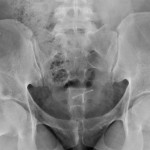Is coccyx removal surgery something you are considering?
Coccyx removal surgery - what is it? In its simplest description, the procedure for coccyx surgery includes a surgeon operating on a patient who is under general anesthesia in the coccyx region. The coccyx is also known as the tailbone. Coccyx removal surgery, also referred to as a coccygectomy, is usually the last resort used for the treatment of chronic coccyx or tailbone pain that does not respond to other treatments or in the treatment of cancers of the tailbone. Recovery from coccyx surgery can take months and the patient may experience significant pain during recovery.
Before a coccyx removal surgery (coccygetomy) can be performed, the patient should be carefully evaluated, preferably by an experienced coccyx surgeon. A coccygectomy is not a common surgery and the area is delicate, so an experienced surgeon is someone to seek out for their professional opinion. Various x-rays of the coccyx need to be done and the surgeon will meet with the patient to see if the patient is a good candidate for the procedure. Not all people are either able to have a coccyx surgery or there may be other treatments still available before surgery is done. In the case of cancers where the cancer has penetrated into the bone, the removal procedure may be medically necessary to proceed with cancer treatment. For chronic pain conditions, coccyx removal is generally regarded as a treatment option of last resort and the surgeon will want to meet with the patient to confirm the patient has tried other means of treatment and they have not worked.
On the surgery day, the patient will be asked to fast. At the hospital, the patient will change into hospital gowns and then may be asked to wash the area around the tailbone, although it will be wiped down again and disinfected in the operating room. As with all surgeries, intravenous lines are then inserted to secure access to the patient's veins and introduce medications and the patient is then placed under anesthesia. The entire time it takes to do the actual coccyx removal surgery takes around an hour.

Figure 1B. 30-year-old female with sacral and lower back postpartum pain. The radiologist reading the outlet radiograph of the sacrum and coccyx noted a subtle cortical irregularity along the anterior cortical margin of the S3-S4 segment intervertebral level on the lateral view, suggesting possible nondisplaced fracture.
After surgery, patients usually cannot sit up or lie on their backs without severe pain. There is potential for coccygectomy complications - please read here. This is completely normal. Supportive pillows and other aids may be used to help patients feel more comfortable and they will be encouraged to find a position that they feel they can tolerate with the least amount of pain. Analgesic medications can also be offered as the patient recovers. Other heavier medications are usually prescribed by the surgeon as the surgery area will be quite painful. Please follow a strict medication program as these drugs and medications can potentially be addictive. As everyone is different in recovery, you may or may not use additional medication. Because of the location of the surgery, there is a risk of infection and the patient must care well for the surgical site, being especially careful to avoid fecal contamination of the site caused by poor hygiene. For more information on coccygectomy or coccyx removal surgery recovery, please read here.
For the first few months after your coccyx removal surgery (coccygectomy), patients may notice an increase in pain and discomfort. After the initial healing phase, a substantial improvement should be experienced. Again, please be patient and remember that every person has their own recovery speed. Pain levels should go down and the patient will be able to sit and lie comfortably in addition to engaging in normal activities. Patients with chronic pain that did not respond well to other treatments may find their quality of life is much improved after the surgery.

Copyright 2019 Coccygectomy.org. All rights reserved
Powered by BUGG Marketing Inc.
